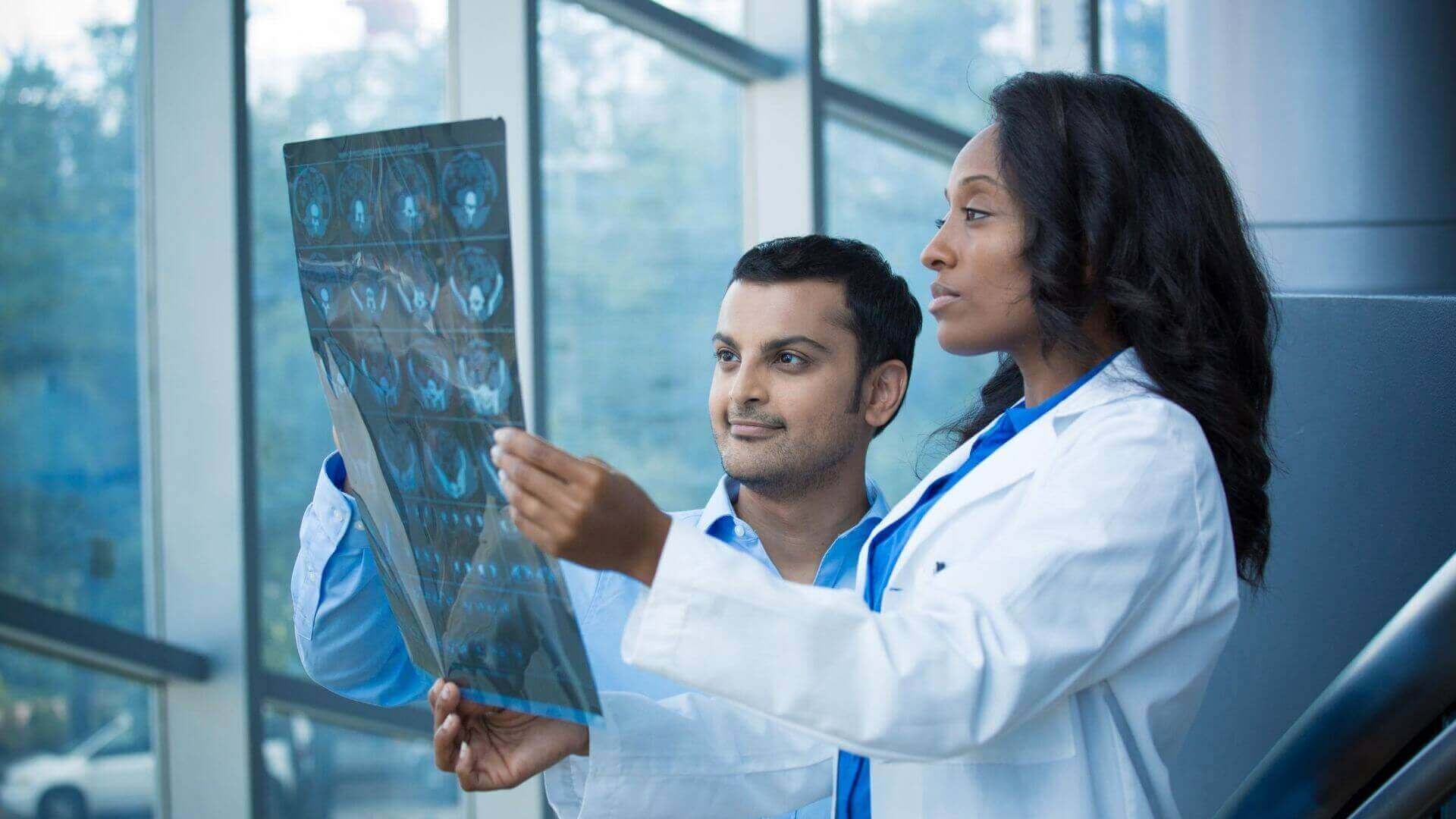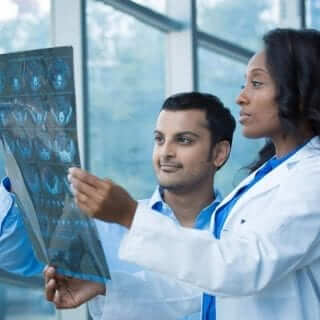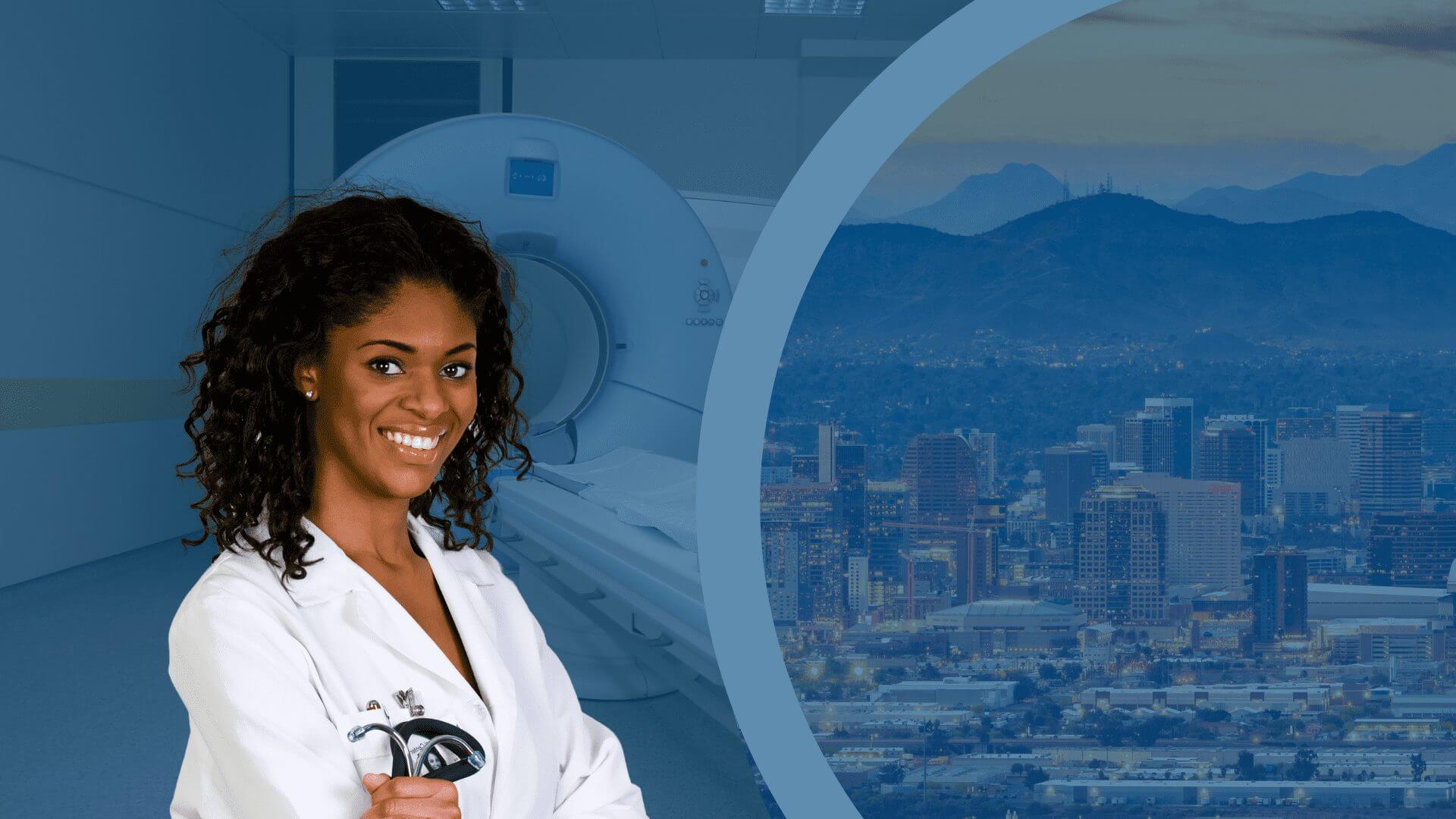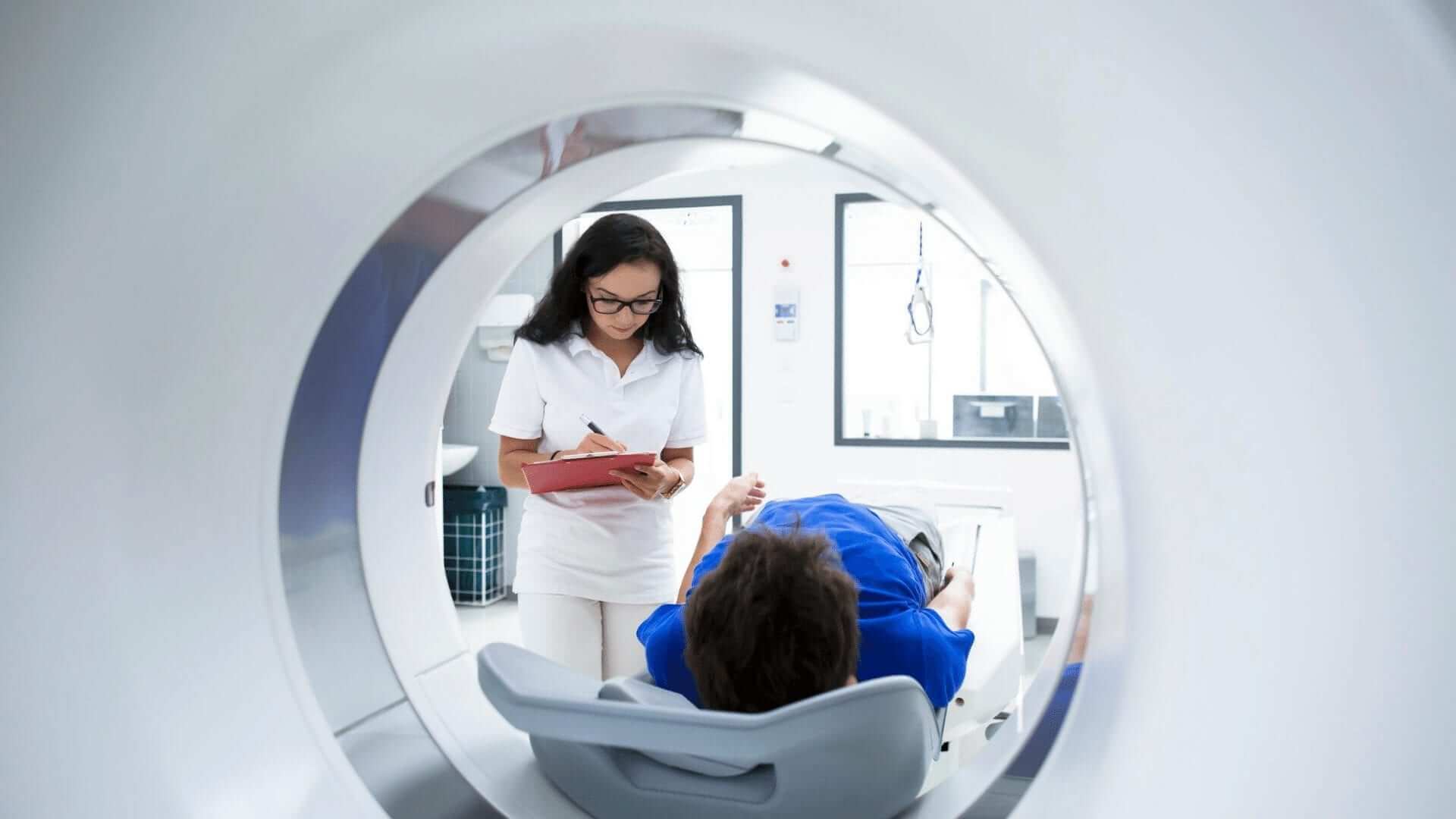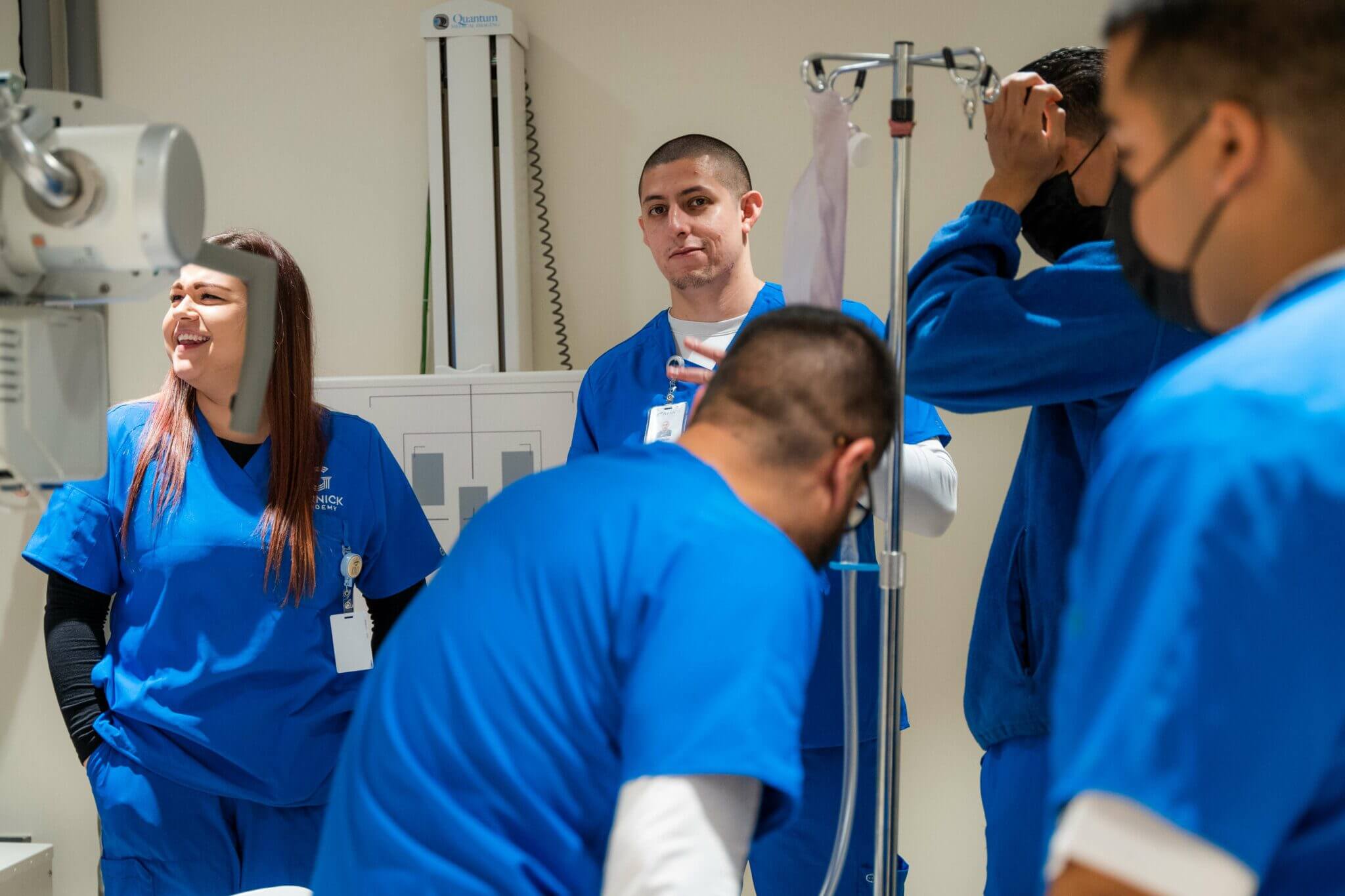Options, Options, Options: Selecting A Radiologic Technology Program
Date: October 3, 2022
As the U.S. population ages, the demand for skilled healthcare workers also proportionally increases. For instance, one area where this is especially true is in healthcare imaging.
What is Diagnostic Imaging?
Specifically, modern diagnostic imaging allows doctors to look inside the human body. Physicians do this for clues regarding early disease detection and injury diagnoses. For those contemplating a career in allied healthcare, entering the medical diagnostic imaging profession could be an investment. Notably, it may be worth your time and effort.
In brief, diagnostic imaging is a catch-all description encompassing several related yet individual imaging sciences. Specific imaging techniques are deployed depending on the symptoms or body regions being examined. In general, modern imaging includes several areas. Among these are computed tomography (CT), nuclear medicine, magnetic resonance imaging (MRI), ultrasound, and radiology/X-ray.1 We explore several of these below.
1, Computed Tomography
One imaging technique is computed tomography (CT). This is a computerized X-ray imaging procedure using narrow X-ray beams that are aimed and rotated around the body. After that, the beams produce signals, which are processed to generate cross-sectional images or “slices” of the body. Consequently, these slices, aka tomographic images, provide more detailed information than conventional X-rays.
In brief, successive slices are collected by the machine’s computer and digitally “stacked” together. Whereupon they form a three-dimensional image. Most compellingly, the procedure provides easier identification and location of basic structures, possible tumors, or abnormalities.2
2, Nuclear Medicine Imaging
A second imaging technique is nuclear medicine imaging. By and large, this uses small amounts of radioactive materials called radiotracers. Typically, such radiotracers are injected into the bloodstream, inhaled, or swallowed. Correspondingly, the radiotracers travel through the examined areas and give off energy through gamma rays. Whereupon they are detected by special cameras and computers to create internal bodily images.3
Considered a novel procedure, nuclear medicine imaging provides unique information that often cannot be obtained using other imaging methods. Because of this, it offers the potential to identify disease in its earliest stages.3
Gurnick Academy of Medical Arts offers an A.S. in Nuclear Medicine Technology program. The program’s philosophy is to educate students to succeed in the evolving field of nuclear medicine. Presently, it strives to prepare compassionate, competent, and professional future nuclear medicine technologists.
3, Magnetic Resonance Imaging (MRI)
A third imaging technique is magnetic resonance imaging (MRI). Deemed by some people as the century’s most novel invention, MRI uses magnetism and radio waves to view internal body organs and structures. On the whole, healthcare professionals conduct MRI scans to diagnose various conditions without fearing invasive side effects. In short, the procedure is used for many reasons, from torn ligaments and tumors to examining the brain and spinal cord.4
Gurnick Academy of Medical Arts offers an A.S. in Magnetic Resonance Imaging. In brief, the modality covers image production, quality control, signal-to-noise ratio, and primary pulse sequences. To summarize, MRI students perform clinical MRI examinations and other procedures.
4, Ultrasound Technology
A fourth imaging technique is ultrasound technology or sonography. Overall, this procedure uses sound waves to image organs, tissues, and other structures inside the body. Unlike X-rays, this type of soundwave radiation is not ionizing or dangerous. The novelty of the ultrasound procedure is it can capture body motions, such as the beating heart or blood flowing through vessels.6
Generally speaking, there are two main categories of ultrasounds: pregnancy and diagnostic ultrasounds.6 Gurnick Academy of Medical Arts offers an A.O.S. in Ultrasound Technology Program. Overall, course objectives include preparing competent entry-level general/vascular sonographers. To accomplish this, core areas are stressed. These include cognitive (knowledge), psychomotor (skills), and affective (behavior) learning domains. Ultimately, graduates can become qualified to work in hospitals, imaging centers, physicians’ offices, or clinics.
5, Radiologic/X-ray Technology
A fifth imaging technique is radiologic/X-ray technology. In essence, this procedure uses high-energy electromagnetic waves known as X-ray images within the body. By and large, the most common use of X-rays is for checking for fractures (broken bones). However, X-rays are used in other ways. For example, chest X-rays can spot pneumonia. Similarly, mammograms use X-rays to detect breast cancer.5
While considered the most extensive diagnostic imaging field, those who pursue radiologic technology must attend an accredited program. An accredited course should equip students with the necessary training and acumen. Upon completing a radiologic technology program, one is eligible to sit for an examination and obtain certification. Once certified, one may seek work as a radiologic technologist.
Generally, an X-ray technologist training program takes two to four (2–4) years to complete. Most often, it leads to either associate’s or bachelor’s degrees. On the whole, radiologic training programs are available through colleges, universities, hospitals, and the military.
In Summary
Gurnick Academy of Medical Arts offers an X-ray Technology with Medical Assistant Skills program and two associate degrees in radiologic technology. These include the Associate of Occupational Science in Radiologic Technology and the Associate of Science in Radiologic Technology programs. ~
Citations:
1 “Diagnostic Imaging.” Medlineplus.gov, National Library of Medicine. 2019. (Accessed Apr. 21, 2022.)
2 National Institute of Biomedical Imaging and Bioengineering (NIBIB). “Computed Tomography (CT) | National Institute of Biomedical Imaging and Bioengineering.” Nih.gov, U.S. Department of Health and Human Services. 2009. (Accessed Apr. 21, 2022.)
3^a, b Radiology (ACR), Radiological Society of North America (RSNA), and American College. “General Nuclear Medicine.” Radiologyinfo.org. Apr. 20, 2018. (Accessed Apr. 22, 2022.)
4 “MRI Scans.” Medlineplus.gov, National Library of Medicine. 2016. (Accessed Apr. 21, 2022.)
5 “X-rays.” Medlineplus.gov, National Library of Medicine. Apr. 4, 2022. (Accessed Apr. 21, 2022.)
6^a, b “Ultrasound: MedlinePlus Medical Test.” Medlineplus.gov, National Library of Medicine. Dec. 15, 2020. (Accessed April 21, 2022.)


